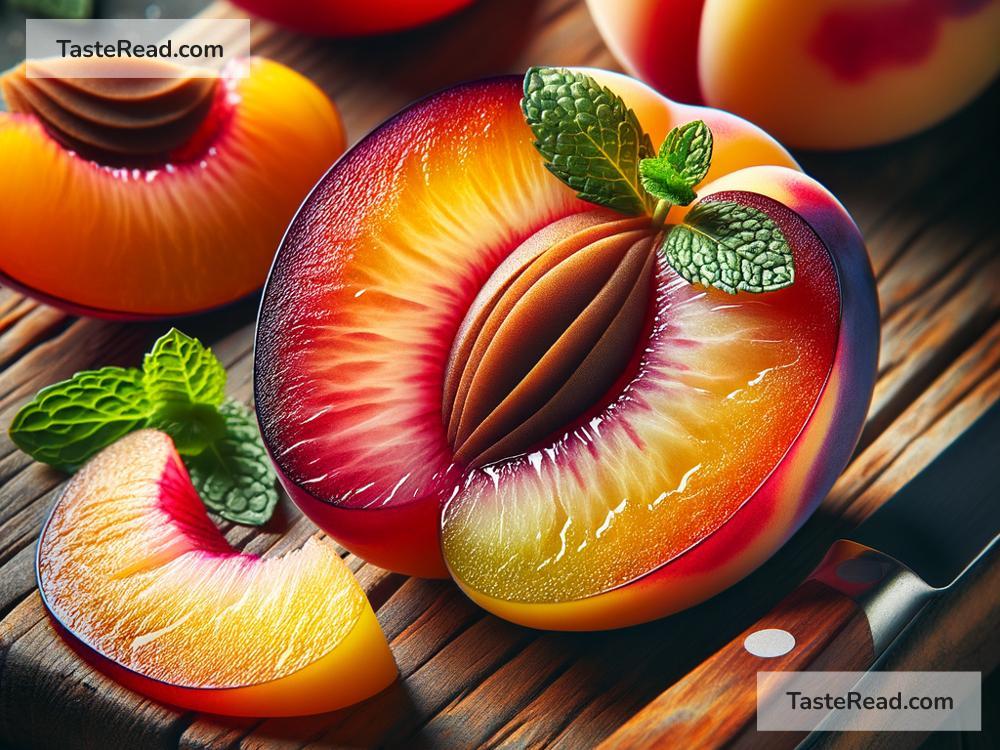The Effect of Crossbreeding on Fruit Taste
Have you ever bitten into a new, exciting fruit and wondered how it came to exist? Fruits that seem to combine flavors or have a unique appearance are often the result of crossbreeding. This process has been used for centuries to create better, tastier, and more useful fruits. But what exactly is crossbreeding, and how does it affect the taste of fruits? Let’s dive into this topic.
What is Crossbreeding?
Crossbreeding is the process of combining two different plants to create a new one. Scientists or farmers take the pollen from one plant and use it to fertilize another plant. The result is a hybrid plant that carries some traits from both its “parents.” This technique is commonly used in agriculture to make fruits bigger, sweeter, or more resistant to diseases and pests.
Imagine two types of fruits — one that is really sweet, and another that is super juicy but not very sweet. Scientists can crossbreed these fruits to create a hybrid that is both sweet and juicy. This opens up a world of possibilities for new flavors, textures, and experiences.
Why Do Farmers and Scientists Crossbreed Fruits?
Nature doesn’t always make fruits exactly the way we want them. Some fruits grow small or taste bitter, while others spoil quickly. Farmers and scientists crossbreed fruits for several reasons:
-
Improved Taste: Sweetness, tanginess, and juiciness are all important qualities for fruits. Crossbreeding allows people to create fruits that have a balanced and enjoyable taste.
-
Better Appearance: Bright colors and unique shapes make fruits more appealing to buyers. A vibrant fruit is more likely to catch someone’s eye at the grocery store.
-
Longer Shelf Life: Some fruits spoil within a few days, making them difficult to transport or store. Crossbreeding can produce fruits that stay fresh for longer.
-
Resistant to Pests and Diseases: Farmers face challenges in keeping fruits healthy. Hybrid fruits can be bred to withstand attacks from insects and diseases.
-
Adaptation to Different Climates: Certain plants only grow in specific climates. Crossbreeding can help create fruits that thrive in a wider variety of environments.
How Does Crossbreeding Affect the Taste of Fruits?
Taste is one of the most exciting results of crossbreeding. By combining the qualities of two different fruits, people can create hybrids that offer unique and delightful flavors. Here’s how crossbreeding impacts the taste:
-
Blending Flavors: Crossbreeding merges the taste profiles of two fruits. For example, the tangy-sweet flavor of a pluot comes from blending the plum and the apricot. Pluots are sweeter than plums but still carry the slightly tart flavor of their parent fruit.
-
Improving Sweetness: Many people prefer fruits that are sweet, and crossbreeding can enhance this quality. For instance, the beloved Honeycrisp apple was created through careful crossbreeding to achieve its trademark sweetness and crunch.
-
Balancing Acidity: Some fruits have a sharp, acidic taste that not everyone enjoys. Crossbreeding can tone down that acidity while keeping other attractive traits, like juiciness or vibrant flavor.
-
Creating New Flavors: Certain hybrid fruits have completely unique tastes that don’t exist in nature. The “cotton candy grape,” for instance, is a crossbreed grape designed to taste like pure candy — a flavor that surprises and delights many people.
Examples of Crossbred Fruits
Here are some fruits you might recognize that were created through crossbreeding:
- Pluot: A mix of plum and apricot, known for its juicy and sweet taste.
- Tangelo: A combination of a tangerine and a grapefruit, offering a tangy yet sweet flavor.
- Boysenberry: A hybrid of raspberry, blackberry, and loganberry, loved for its deep, rich taste.
- Grapple: A hybrid made to taste like both an apple and grapes, with a sweet, fruity flavor.
- Lemonade Fruit: A crossbreed of lemon and mandarin, offering a refreshing, mildly sweet taste perfect for juice.
Are There Any Downsides to Crossbreeding?
While crossbreeding has many benefits, it isn’t perfect. Sometimes hybrid fruits can lose the natural flavors of their parent fruits. A fruit that is bred to be sweeter might sacrifice some of its original complexity or richness. Additionally, creating hybrids requires time and effort, and not all crossbreeding experiments are successful.
There’s also a concern that crossbreeding may reduce genetic diversity. If farmers only grow hybrids, fewer native fruit varieties are grown, which could lead to problems if pests or diseases evolve to target hybrids specifically.
Final Thoughts
Crossbreeding is an incredible tool that helps farmers and scientists improve fruits in many ways. From enhancing taste to making fruits easier to grow, this technique has changed the way we enjoy fresh produce. Hybrid fruits often bring exciting new flavors to our plates, blending the best traits of their “parent” fruits.
Next time you bite into a unique fruit—whether it’s a pluot, a tangelo, or even a cotton candy grape—take a moment to appreciate the effort behind its creation. These fruits are a result of clever science and the desire to make eating fruits even more enjoyable.
Almost every fruit we eat tells a story of history, innovation, and a love for flavor. Wouldn’t you agree that crossbreeding makes the world of fruit so much more delicious?


